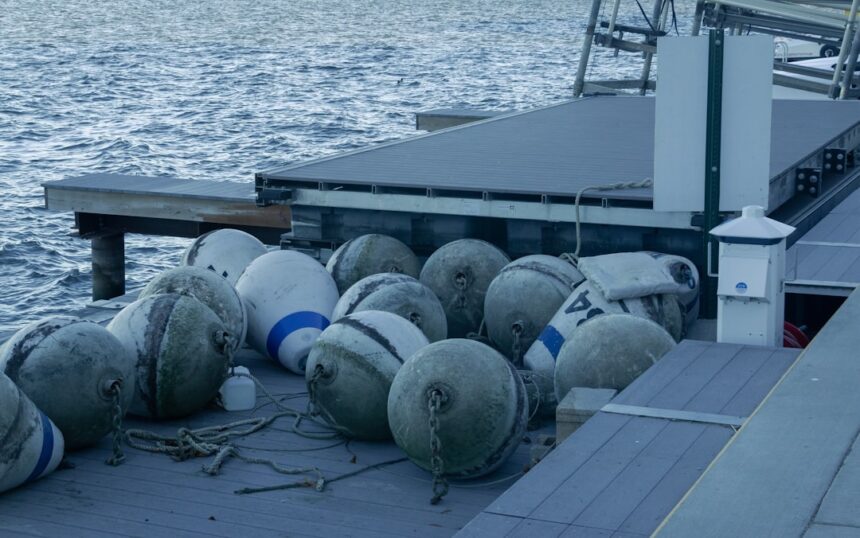As the geopolitical landscape continues to evolve, the significance of undersea warfare strategy has become increasingly pronounced. In 2024, nations around the globe are recognizing the strategic advantages that lie beneath the ocean’s surface. The undersea domain is not merely a battleground; it is a critical arena for national security, economic interests, and technological supremacy.
The strategic importance of undersea warfare is underscored by the growing competition among major powers, particularly in contested regions such as the South China Sea and the Arctic. This competition has prompted a reevaluation of naval doctrines and the development of sophisticated strategies aimed at asserting dominance in this hidden realm. The complexities of undersea warfare strategy in 2024 are multifaceted.
Nations are investing heavily in research and development to enhance their capabilities, focusing on both offensive and defensive measures. The integration of advanced technologies, such as artificial intelligence and autonomous systems, is reshaping traditional approaches to naval warfare. As countries seek to protect their maritime interests and deter potential adversaries, the need for a comprehensive understanding of undersea warfare tactics and technologies has never been more critical.
This article will explore the evolution of undersea warfare tactics, advancements in technology, the role of submarines, communication systems, cybersecurity implications, challenges faced, international cooperation efforts, environmental considerations, and future trends shaping this vital domain.
Key Takeaways
- Undersea warfare strategy in 2024 emphasizes the importance of maintaining undersea dominance for national security and defense.
- Evolution of undersea warfare tactics has seen a shift towards more stealthy and autonomous operations to counter emerging threats.
- Advancements in undersea warfare technology include the development of unmanned underwater vehicles and advanced sonar systems.
- Submarines play a crucial role in undersea warfare, providing stealth, endurance, and the ability to launch various types of weapons.
- Undersea communication and surveillance systems have become more sophisticated, enabling real-time data collection and analysis for strategic advantage.
Evolution of Undersea Warfare Tactics
The evolution of undersea warfare tactics has been a response to both technological advancements and changing geopolitical dynamics. Historically, submarines were primarily used for stealthy reconnaissance and strategic deterrence. However, as naval warfare has progressed, so too have the tactics employed by submarines and other undersea assets.
The Cold War era marked a significant turning point, with the introduction of nuclear-powered submarines that could remain submerged for extended periods. This capability allowed for a shift from traditional surface engagements to a focus on stealth and surprise attacks. In recent years, the tactics of undersea warfare have continued to evolve in response to emerging threats.
The rise of anti-submarine warfare (ASW) capabilities among potential adversaries has necessitated a more dynamic approach to submarine operations. Modern submarines are now equipped with advanced sensors and weapons systems that enable them to engage in complex maneuvers while evading detection. Additionally, the integration of unmanned underwater vehicles (UUVs) has expanded the tactical options available to naval forces.
These UUVs can conduct reconnaissance missions, gather intelligence, and even deliver payloads without putting human lives at risk. As a result, the tactics employed in undersea warfare are becoming increasingly sophisticated and adaptable.
Advancements in Undersea Warfare Technology

The technological advancements in undersea warfare have been nothing short of revolutionary. In 2024, nations are leveraging cutting-edge innovations to enhance their operational capabilities beneath the waves. One of the most significant developments has been in the realm of sensor technology.
Modern submarines are equipped with advanced sonar systems that provide unparalleled situational awareness.
Moreover, the integration of artificial intelligence (AI) into undersea warfare technology is transforming decision-making processes.
AI algorithms can analyze vast amounts of data from various sensors in real-time, enabling submarines to make informed tactical decisions quickly. This capability not only enhances operational efficiency but also increases the survivability of submarines in hostile waters. Additionally, advancements in materials science have led to the development of quieter hull designs that reduce acoustic signatures, making it more challenging for adversaries to detect submarines.
Another area of significant advancement is in weaponry. The development of advanced torpedoes and missile systems has expanded the offensive capabilities of submarines. These weapons are designed to engage surface ships, other submarines, and land-based targets with high precision from considerable distances.
Furthermore, the emergence of hypersonic weapons is poised to revolutionize undersea warfare by providing unprecedented speed and lethality. As nations continue to invest in these technologies, the landscape of undersea warfare will undoubtedly be reshaped.
The Role of Submarines in Undersea Warfare
| Submarine Type | Stealth | Endurance | Weaponry |
|---|---|---|---|
| Nuclear-Powered Submarine | High | Unlimited | Missiles, Torpedoes |
| Diesel-Electric Submarine | Medium | Several weeks | Torpedoes |
| Attack Submarine | High | Several months | Missiles, Torpedoes |
| Ballistic Missile Submarine | High | Several months | Intercontinental Ballistic Missiles |
Submarines play a pivotal role in undersea warfare strategy due to their unique capabilities and versatility. They serve as both offensive and defensive assets, capable of conducting a wide range of missions that include intelligence gathering, surveillance, reconnaissance, and strike operations. In 2024, submarines are viewed as essential components of naval power projection, allowing nations to extend their influence beyond their territorial waters.
The stealthy nature of submarines provides them with a distinct advantage in modern naval warfare. Their ability to operate undetected allows them to gather critical intelligence on enemy movements and intentions while remaining shielded from countermeasures. This capability is particularly valuable in regions where surface vessels may be vulnerable to anti-ship missiles or airstrikes.
Furthermore, submarines can launch precision strikes against high-value targets without exposing themselves to immediate retaliation. In addition to their offensive capabilities, submarines also play a crucial role in deterrence strategies. The presence of nuclear-powered submarines equipped with ballistic missiles serves as a powerful deterrent against potential adversaries.
The assurance that an adversary could face devastating retaliation from a submerged platform creates a stabilizing effect in international relations. As nations continue to modernize their submarine fleets and enhance their capabilities, the role of submarines in undersea warfare will remain central to national security strategies.
Undersea Communication and Surveillance Systems
Effective communication and surveillance systems are vital components of successful undersea warfare operations. In 2024, advancements in these areas are enabling naval forces to maintain situational awareness and coordinate complex missions more effectively than ever before. Traditional communication methods used by submarines have often been limited due to the challenges posed by underwater environments; however, innovations are changing this landscape.
One significant advancement is the development of underwater acoustic communication systems that allow submarines to transmit data while submerged. These systems utilize sound waves to relay information over considerable distances, enabling real-time communication between submerged vessels and command centers. This capability enhances operational coordination and allows for timely decision-making during critical missions.
Surveillance systems have also seen remarkable improvements with the integration of advanced sensors and satellite technology. Submarines can now deploy unmanned underwater vehicles (UUVs) equipped with sophisticated surveillance equipment to gather intelligence on enemy activities without risking human lives. These UUVs can operate autonomously or be remotely controlled from a submarine or surface vessel, providing commanders with valuable insights into enemy movements and capabilities.
Undersea Warfare in the Age of Cybersecurity

As technology continues to advance, the intersection of undersea warfare and cybersecurity has become increasingly relevant. In 2024, cyber threats pose significant risks not only to surface vessels but also to submarines operating beneath the waves. The reliance on interconnected systems for navigation, communication, and weaponry makes submarines vulnerable to cyberattacks that could compromise their operational effectiveness.
To address these challenges, navies around the world are prioritizing cybersecurity measures within their undersea warfare strategies. This includes implementing robust encryption protocols for communication systems and conducting regular cybersecurity assessments to identify vulnerabilities within their networks. Additionally, training personnel in cybersecurity awareness is essential for ensuring that crews can recognize potential threats and respond effectively.
Moreover, as adversaries develop sophisticated cyber capabilities aimed at disrupting naval operations, the need for resilience becomes paramount. Submarines must be equipped with contingency plans that allow them to operate effectively even in the face of cyber disruptions. This may involve developing alternative communication methods or employing redundant systems that can maintain functionality during an attack.
Challenges and Risks in Undersea Warfare
Despite the advancements in technology and tactics, undersea warfare presents numerous challenges and risks that must be navigated carefully. One significant challenge is the increasing complexity of underwater environments. Factors such as ocean currents, temperature variations, and underwater topography can impact sensor performance and navigation accuracy.
As a result, submarines must be equipped with advanced technologies that can adapt to these dynamic conditions. Another challenge lies in the growing competition among nations for dominance in undersea warfare capabilities. As more countries invest in advanced submarine fleets and anti-submarine warfare technologies, the risk of miscalculations or unintended escalations increases.
The potential for conflicts arising from misunderstandings or misinterpretations of intentions underscores the need for effective communication channels between nations. Additionally, environmental considerations pose risks for undersea operations. The impact of military activities on marine ecosystems is an area of growing concern among environmentalists and policymakers alike.
As nations conduct exercises or deploy underwater assets, they must balance operational objectives with environmental stewardship to mitigate potential harm to fragile marine habitats.
International Cooperation in Undersea Warfare
In an era marked by increasing tensions among global powers, international cooperation in undersea warfare has emerged as a crucial element for maintaining stability and security in maritime domains.
Joint exercises involving multiple navies provide opportunities for sharing best practices and improving interoperability among allied forces.
These exercises allow participating nations to test their tactics and technologies while fostering relationships built on trust and mutual understanding. Furthermore, information-sharing agreements can facilitate real-time intelligence exchange regarding potential threats or developments in undersea environments. International organizations also play a vital role in promoting cooperation in undersea warfare matters.
Forums such as the United Nations Convention on the Law of the Sea (UNCLOS) provide platforms for dialogue on maritime security issues while establishing legal frameworks governing activities in international waters. By engaging in multilateral discussions focused on shared interests, nations can work together to address common challenges related to undersea warfare.
Environmental Considerations in Undersea Warfare
As awareness grows regarding environmental issues facing our oceans, it is imperative that military operations consider their ecological impact when conducting undersea warfare activities. In 2024, there is an increasing recognition among naval forces that sustainable practices must be integrated into operational planning. The deployment of submarines and other underwater assets can disrupt marine ecosystems if not managed responsibly.
Noise pollution generated by submarine operations can affect marine life behavior patterns while sonar usage may interfere with communication among species such as whales or dolphins. To mitigate these impacts, navies are exploring quieter technologies that minimize acoustic signatures during operations. Additionally, environmental assessments are becoming standard practice before conducting military exercises or deployments near sensitive marine habitats.
By evaluating potential risks associated with military activities on local ecosystems beforehand, navies can take proactive measures to minimize harm while fulfilling their operational objectives.
Future Trends in Undersea Warfare Strategy
Looking ahead into 2024 and beyond, several trends are likely to shape the future landscape of undersea warfare strategy significantly. One prominent trend is the increasing reliance on unmanned systems—both underwater vehicles (UUVs) and aerial drones—for reconnaissance missions and combat operations alike. These platforms offer enhanced flexibility while reducing risks associated with human involvement during dangerous missions.
Another trend involves greater integration between surface fleets and submarine forces through advanced networking capabilities that enable seamless communication across different platforms operating within joint task forces—allowing for coordinated responses against emerging threats more effectively than ever before. Furthermore, as climate change continues to alter oceanic conditions globally—affecting everything from sea levels rising along coastlines—to shifting fish populations—navies will need adaptive strategies that account for these changes when planning future operations within contested maritime environments.
Navigating the Depths of Undersea Warfare in 2024
In conclusion, navigating the depths of undersea warfare strategy in 2024 presents both opportunities and challenges for nations worldwide as they seek dominance beneath ocean surfaces while balancing ecological responsibilities alongside operational imperatives effectively moving forward into an uncertain future filled with evolving threats requiring innovative solutions across all domains involved within this critical arena shaping global security dynamics today!
As nations continue to enhance their naval capabilities, the importance of undersea warfare strategy in 2024 cannot be overstated. A related article that delves into the evolving tactics and technologies in this domain can be found on In The War Room. For a comprehensive analysis, you can read more about it in this insightful piece: Undersea Warfare Strategy 2024.
WATCH THIS! The Secret Russian Weapon That Terrifies NATO
FAQs
What is undersea warfare strategy?
Undersea warfare strategy refers to the military tactics and operations used in the underwater domain, including submarines, unmanned underwater vehicles, and other undersea assets.
What are the key components of undersea warfare strategy?
Key components of undersea warfare strategy include submarine operations, anti-submarine warfare, mine warfare, intelligence, surveillance, and reconnaissance (ISR), and undersea communications.
How does undersea warfare strategy differ from other military strategies?
Undersea warfare strategy focuses on operations and tactics specific to the underwater domain, including stealth, acoustic signature management, and long-duration operations beneath the surface.
What are the goals of undersea warfare strategy?
The goals of undersea warfare strategy include maintaining undersea superiority, denying the use of the undersea domain to adversaries, protecting maritime trade routes, and projecting power from the undersea domain.
What are some challenges in undersea warfare strategy?
Challenges in undersea warfare strategy include advancements in anti-submarine warfare technology, undersea communication limitations, and the need for sustained undersea operations.
How is undersea warfare strategy expected to evolve by 2024?
By 2024, undersea warfare strategy is expected to evolve with advancements in undersea autonomous systems, improved undersea communication capabilities, and enhanced integration of undersea assets with other military domains.




